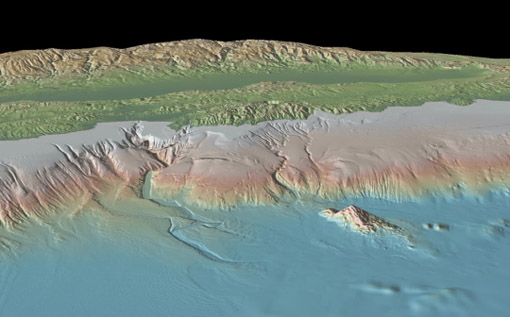Google Underwater
So that might not be the awesome name that they’ll be using, but CNET is rumormongering about Google cooking up something oceanographic along the lines of Maps or Earth. Their speculation includes this lovely image from the Lamont-Doherty Earth Observatory (LDEO) of Columbia University.

Unlike most people with a heartbeat, I didn’t find Google Maps particularly interesting on arrival. I was a fan of the simplicity of Yahoo Maps at the time (but no longer, eek!) and Microsoft’s Terraserver had done satellite imagery for a few years. But the same way that Google Mars shows us something we’re even less familiar with than satellite imagery of Earth, there’s something really exciting about possibility of seeing beneath the oceans.

